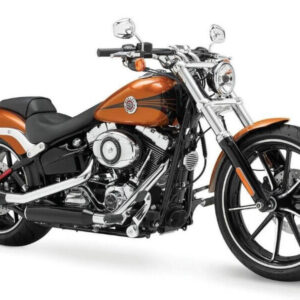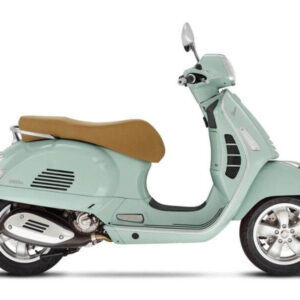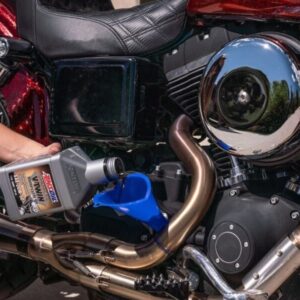When was the electric motor invented? Over the years, the electric motor has evolved extensively and continues to play a key (and growing) role in today’s society.
When was the electric motor invented?
The electric motor was first developed in the 1830s, 30 years after the first battery. Interestingly the motor was developed before the first dynamo or generator.
1834 – Thomas Davenport of Vermont developed the first real electric motor (‘real’ meaning powerful enough to do a task) although Joseph Henry and Michael Faraday created early motion devices using electromagnetic fields.
The early “motors” created spinning disks or levers that rocked back and forth. These devices could not do any work for humankind but were important for leading the way to better motors in the future. Davenport’s various motors were able to run a model trolley on a circular track and other tasks.

The trolley later turned out to be the first important application of electric power (it was not the light bulb). Rudimentary full sized electric trolleys were finally built 30 years after Davenport’s death in the 1850s.
The electric motor’s world impact before light bulbs
Trolleys and the connected power systems were very expensive to build but transported millions of people to work in the 1880s. Until the growth of the power grid in the 1890s most people (middle and low classes) even in cities did not have the electric light in the home.
It wasn’t until 1873 that the electric motor finally achieved commericial success. Since the 1830s thousands of pioneering engineers have improved motors and created many variations. See other pages for more detail on the electric motor’s vast history.
Motor leads to the generator
After weak electric motors were developed by Faraday and Henry, another early pioneer named Hippolyte Pixii figured out that by running the motor backwards he could create pulses of electricity. By the 1860s powerful generators were being developed.
The electrical industry could not begin until generators were developed because batteries were not an economical way to power society’s needs.
How motors w0rk?
Electric motors can be powered by alternating (AC) current or direct current (DC). DC motors were developed first and have certain advantages and disadvantages. Each type of motor works differently but they all use the power of the electromagnetic field.
We will talk about the very basic principals of electromagnetic fields in motors before you can move on to the different types of motors.
AC electric motors use a secondary and primary winding (magnet), the primary is attached to AC grid power (or directly to a generator) and is energized. The secondary receives energy from the primary without directly touching it. This is done using the complex phenomena known as induction.
The first generators and electrification
In Europe, further building off of his early discoveries and the discoveries of others, Zénobe Gramme developed his Gramme machine in 1871. His machine could convert mechanical energy into a continuous current of electrical energy.
While presenting his invention at the 1873 World’s Fair in Vienna, Gramme accidentally discovered the reversibility of electric motors when he connected two DC devices 2 km from each other, with one functioning as the motor and the other as the generator.
The discovery of DC electric motor reversibility proved that electric motors could be used as generators, converting mechanical work into electrical energy, as well as being able to return unused energy back to the source– which assisted with the development of early power grids.
By the 1920’s, nations across the world had begun developing networks of electrical grids. Soon enough, electricity began creeping into everyday life: gas lanterns were replaced by electric streetlights, air conditioning units now cooled offices and homes, and the streets of major cities were busy with systems of electric trolleys.
The electrical take-over had begun, and the practicality of electric technology accelerated.
Modern motor technology
Brushless DC motors today are lightyears ahead of the old trolley motors of the 19th century, but their design is far from perfection. Conventional BLDC motors like the ones developed in the 80’s are the most popular type of motors on the market today, and their popularity continues to grow with the demand for carbon-neutral products and affordable air conditioning.

The need for solutions with an even higher power output in a smaller package, a reduced environmental footprint, and a viable mass production process will continue to grow.
Building from 200 years of discovery, ECM’s team re-evaluated Genco and Smith’s idea, approaching it from a 21st century perspective.
By embedding copper-etched conductors into a multi-layered printed circuit board to form a stator that works in conjunction with permanent magnets, ECM’s patented technology eliminates the need for wire winding and iron laminations used in conventional motors and generators.
ECM’s Patented PCB Stator and Motor
ECM’s use of a PCB Stator in their permanent magnet BLDC design, allows them to design incredibly thin, lightweight motors that use up to 80% less raw materials. Additionally, using their revolutionary new design, ECM’s team created a design software, PrintStator, to automatically generate unique PCB Stator designs and incorporate all of ECM’s patented design features.
PrintStator optimizes copper geometries and thickness in PCB Stators to deliver a machine with superior torque density and power efficiency.
Exploded view of ECM’s patented PCB Stator Motor design
In 2015, PrintStator was launched and utilized to prototype a mid-drive solution for an electric bike. From discrete inputs, PrintStator automatically generated a unique PCB Stator design, complete with an associated Gerber file, specifying the detailed build characteristics ubiquitously utilized by a PCB manufacturing house to print the design.
By the end of 2019, ECM had collected 10 patents surrounding their PCB Stator BLDC design and software. PrintStator has been used to successfully integrate the PCB Stator platform in the e-mobility, HVACR, robotics, military, maritime and medical industries.
ECM’s PCB Stator motor design improves on many of the issues that have afflicted electric motors from their invention in 1832, significantly improving on motor reliability, efficiency, and power density, but also tackling modern technology obstacles including sustainability, manufacturability, size and weight.
The use of PCB Stators in BLDC motors is certainly the next evolution in electric motor technology but as we can see from the past, it will not be the last.
FAQs
When did the first electric motor come out?
History was made when Thomas Davenport of Vermont invented the first official battery-powered electric motor in 1834.
When did electric motors come into use?
In 1835 the two Dutchmen Sibrandus Stratingh and Christopher Becker built an electric motor that powered a small model car. This is the first known practical application of an electric motor. In February 1837 the first patent for an electric motor was granted to the US-american Thomas Davenport.
What is the oldest electric motor?
The first commutator DC electric motor capable of turning machinery was invented by British scientist William Sturgeon in 1832. Following Sturgeon’s work, a commutator-type direct-current electric motor was built by American inventor Thomas Davenport and Emily Davenport, which he patented in 1837.
Above is information about When was the electric motor invented? that we have compiled. Hopefully, through the above content, you have a more detailed understanding of The first generators and electrification. Thank you for reading our post.









